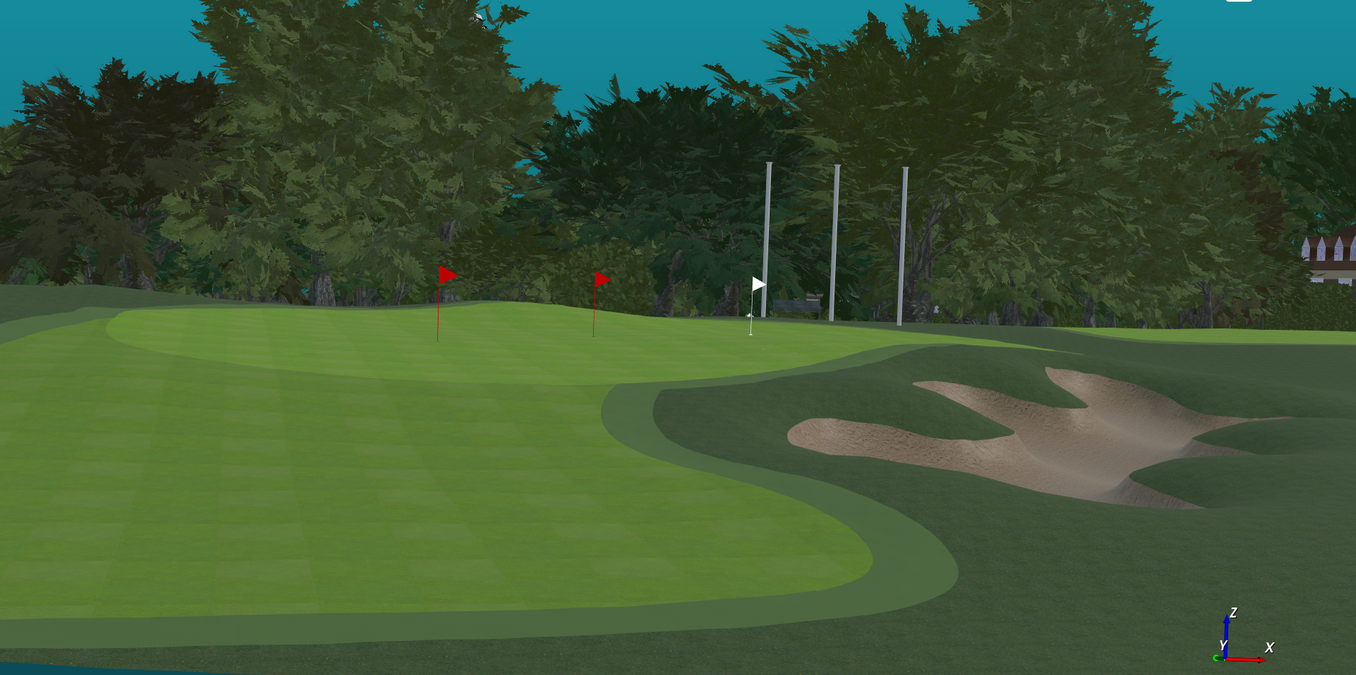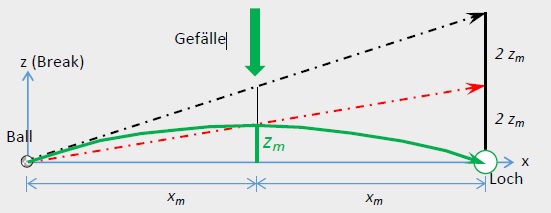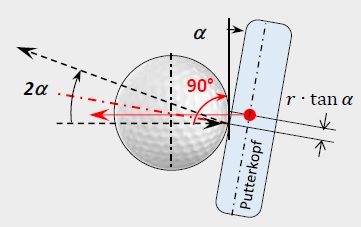Putt Laboratory
Science & Sport
The D3D Puttsimulator is based on scientific principles.
Software and accessories are further developed in the putting laboratory. Material properties of the green are verified in laboratory and open-field tests.
We are open to your ideas and will inform you about the results of our tests.

Our team creates interesting articles that shed illuminate the scientific basis of various movements.
In addition, we can give you a few tips to hand.
Professional Site instead of amateurs
A test for golfers of all classes is the sideways putt on the inclined plane. Experience teaches that the ball rolls parabolically toward the valley. When estimating the break, people often swear over the apex of the parabola (stitch zm) and determine a break of 2∙zm (red line). In fact, the calculation yields that one must align along the tangent. This gives a break of 4 times the stitch dimension (black line). Closer to the hole with double break! Recommendation: Align along the curved stitch and double the measure of the break.
Closer to the hole with double break! (20-04-01 G.Miosga)
Recommendation: Curse over the bow stroke and double the measure of the beak

Canting of the beating surface and law of reflection
Canting of the face by the angle α results in a change in direction of the ball of 2∙α according to the law of refexion (angle of failure = angle of incidence). In addition, the displacement of the contact point by the amount r∙tanα triggers moments on the putter head and the ball and reduces the momentum towards the target.
A straight running putt would miss a golf hole with a radius of 54 mm at a distance of approx. 1.55 m (5 feet) with 1° canting, i.e. 2° deviation.
Control of the sleeping surface brings doel profit! (20-03-01 G.Miosga)
Recommendation: Put on the flat on the hole 5 feet away and evaluate the direction of your putt.

